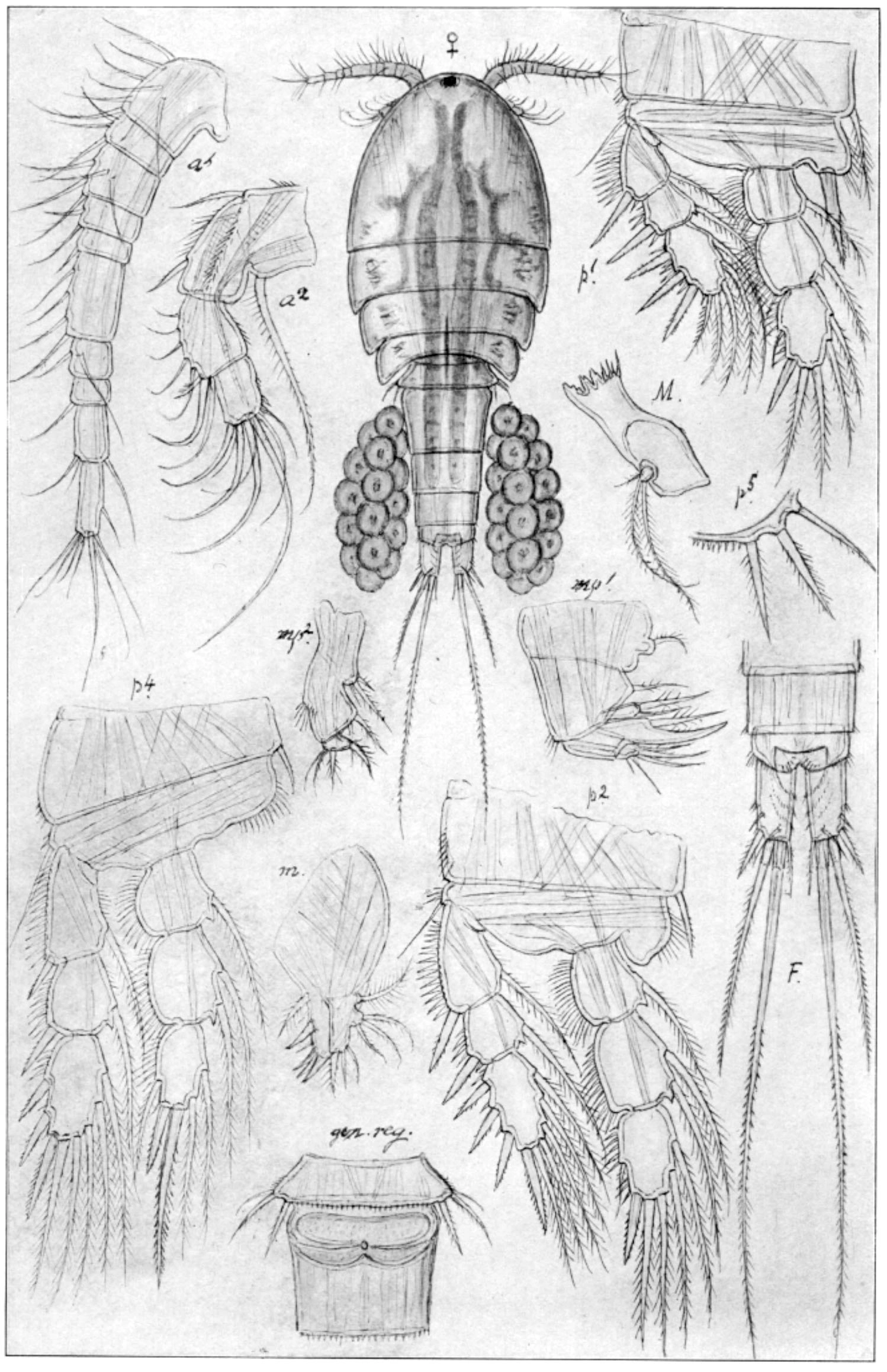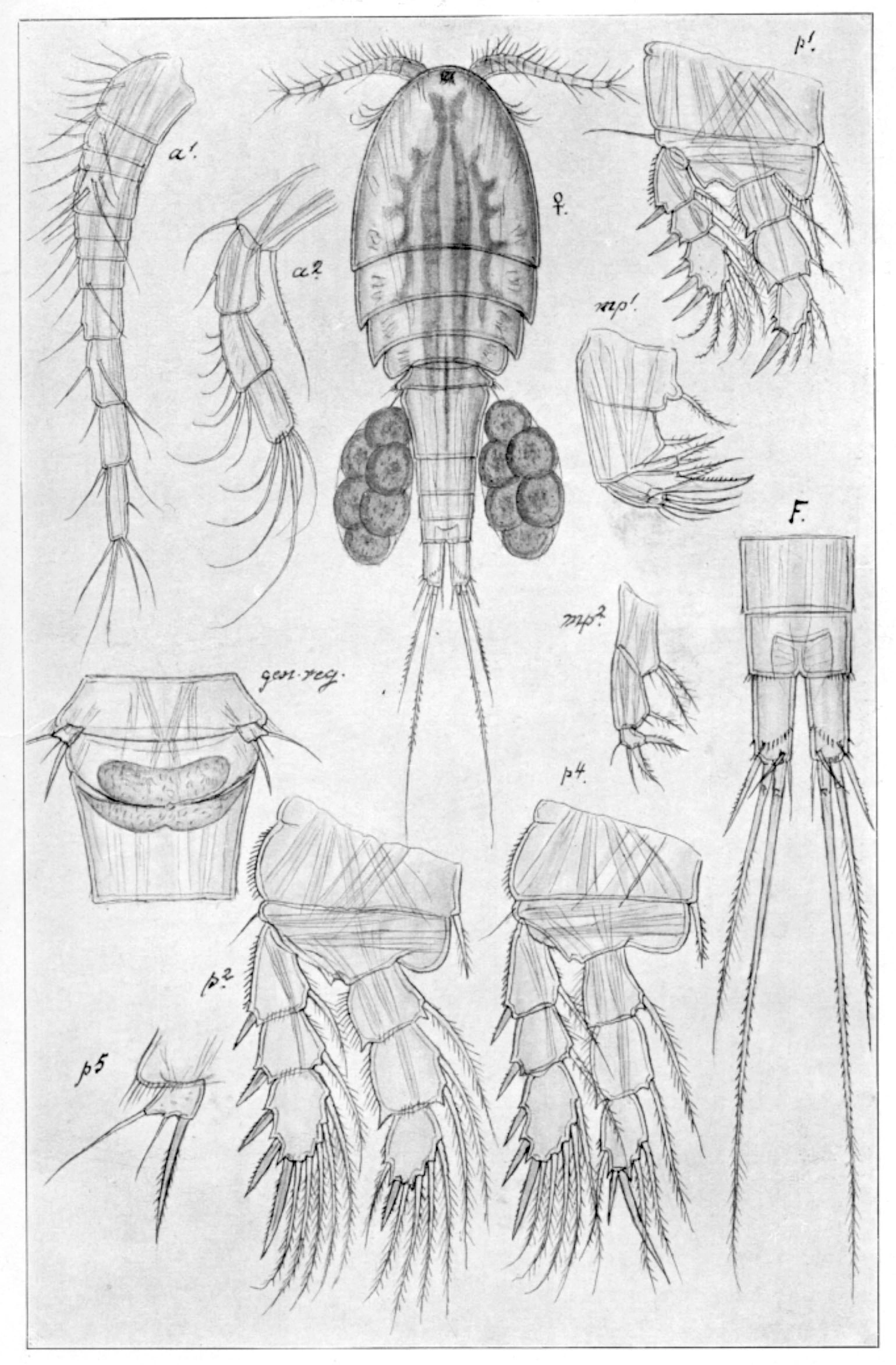Ectocyclops phaleratus
Compared to other cyclopoids, Ectocyclops phaleratus has an abdomen that appears very wide compared to its cephalothorax. It is only found in South-Norway, most often in small nutrient rich localities.
Key characteristics
Ectocyclops phaleratus (female)
The habitués of Ectocyclops phaleratus is similar to Paracyclops affinis which is smaller and has a less robust form. Compared to other cyclopoids, its abdomen appears very wide compared to its cephalothorax. The short antennae have 10 segments, which is a criteria that distinguish E. phaleratus from the two species of the genus Paracylops, having respectively eight and 11 segments. Its colour is a dark reddish brown.
Female: Length 0.9–1.1 mm
Male: Length 0.8 mm
Ecology and distribution
E. phaleratus is found in slightly less than 4 % of the waterbodies, situated south of Dovre and mainly in the lowland (>500 m a.s.l.). It occurs with its highest frequency in waterbodies <10 ha. It seems to be acid sensitive and is rare at pH<6. Electrolyte rich habitats seems to favour the species.
| Vitenskapelig navn | < 4,5 | 4,5 - 4,9 | 5,0 - 5,4 | 5,5 - 5,9 | 6,0 - 6,4 | 6,5 - 7,0 | 7,0 - 7,4 | > 7,5 |
|---|---|---|---|---|---|---|---|---|
| 0 | 0 | 1,1 | 3,6 | 4,6 | 3,2 | 8,4 | 10,3 |
| Vitenskapelig navn | < 1,0 | 1,0 - 1,4 | 1,5 - 1,9 | 2,0 - 2,9 | 3,0 - 3,9 | 4,0 - 4,9 | 5,0 - 6,9 | 7,0 - 9,9 | > 10,0 |
|---|---|---|---|---|---|---|---|---|---|
| 0 | 0,4 | 0,4 | 1,3 | 2,1 | 5,6 | 6,5 | 11,1 | 13,7 |
| Vitenskapelig navn | < 0,01 | 0,01 - 0,09 | 0,1 - 0,9 | 1,0 - 9,9 | 10,0 - 99 | 100 - 999 | > 1000 |
|---|---|---|---|---|---|---|---|
| 4,9 | 5 | 4,5 | 4,7 | 1,9 | 0,5 | 4,3 |
| Vitenskapelig navn | < 100 | 100-299 | 300-499 | 500-699 | 700-999 | >1000 |
|---|---|---|---|---|---|---|
| 4,1 | 6,6 | 3,1 | 0,3 | 0 | 0 |
Look alikes
Paracyclops affinis

